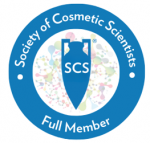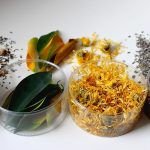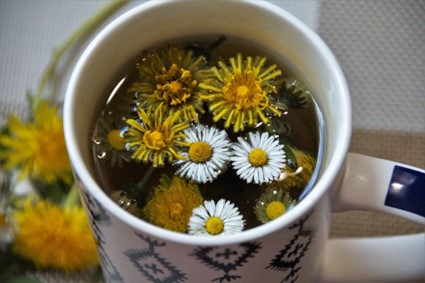Herbal Infusions and Herbal Extracts: A Guide for Cosmetic Manufacturers
Botanical Ingredients in Cosmetics
Brand owners incorporate herbal extracts into their cosmetic products for several reasons:
- Active ingredient: Botanicals offer a wide range of active properties, such as antioxidants, anti-inflammatory agents, and moisturizers.
- Marketing claim: Botanicals can enhance a product’s appeal by conveying a natural and holistic image.
- Brand story: The use of specific botanicals can align with a brand’s identity and values.
- Traditional medicinal uses: Botanicals with a history of traditional use can add credibility to a product.
- Aroma: Botanicals provide a variety of scents that can enhance the sensory experience of a product.
Some brands use botanical ingredients as a way to convey ‘natural is safer’, but this is a myth, and is not permitted under the latest advertising standards.
Identifying Botanical Extracts
All herbal extracts in cosmetic products should be clearly identified using their Latin name and the plant part used which is defined in the INCI name. For instance, Lavandula Angustifolia Flower Extract indicates the plant species (Lavandula Angustifolia), the plant part (flower), and the extraction method. The INCI name encompasses all the chemical components in a typical extraction from that plant. Individual components do not need to be listed separately, unless the component is listed in Annex III of the Cosmetic Regulation as an allergen if it is present above 0.01% in rinse-off products and 0.001% in leave-on products.
Chemical Composition of Botanical Ingredients
The origin of the plant, and how it is processed can affect the chemical composition of the extract. The Authorities recognise that plant extracts can be variable and describe them as ‘Natural Complex Substances’ (NCS). Botanical ingredients are complex mixtures of chemicals and an understanding of the composition helps with the safety assessment and formulation choice for the manufacturer when choosing which herbal extract to use in their cosmetic formulation.
Common classes of components include:
- Terpenes: These compounds contribute to flavour, aroma, and various pharmacological effects.
- Phytosterols: These plant-derived steroids have anti-inflammatory and skin-protective properties.
- Peptides: Peptides act as building blocks for proteins and have various skin-enhancing effects.
- Vitamins: Vitamins play essential roles in skin health and cell function.
- Tannins, lignins, quinones: These phenolic compounds possess antioxidant and anti-inflammatory properties.
- Flavonoids: Flavonoids offer antioxidant, anti-inflammatory, and anti-bacterial benefits.
- Alkaloids: Alkaloids have diverse pharmacological effects, but some can be toxic at high doses.
- Polysaccharides: Polysaccharides, such as gums, act as humectants, attracting and retaining moisture.
Purchasing vs. In-House Extraction
Extracts can be purchased from suppliers or made in-house. When purchasing extracts, enquire about the extraction method and solvent used. CO2 extracts, produced using carbon dioxide, offer a solvent-free alternative.
Safety Considerations for In-House Extraction
If extracting herbal botanicals in-house, adhere to these safety guidelines:
- Dry the botanical material: This halts microbial growth and prevents contamination.
- Add a preservative to water extracts: This ensures the extract’s stability unless used immediately.
- Filter the extracted mixture: Remove solid plant parts.
- Document the extraction process: Provide detailed information about the extraction method, including heating, storage, and filtration details and I will quantify the amount of components so I can understand the concentration of ingredients in the final product.
Safety Assessment of Botanical Ingredients
Assessing the safety of botanical ingredients can be challenging due to limited safety testing and variations in plant parts and extraction methods. However, several techniques can be employed:
- Review traditional usage in food and medicine: Consider the long history of use as an indicator of safety.
- Evaluate available safety testing data: Analyse any relevant safety studies, even if not directly applicable.
- Consider low concentrations in cosmetic products: Assess safety based on the low levels used in cosmetics.
- Structure-activity relationship analysis: Predict potential toxicity based on the molecular structures of the components.
- Weight-of-evidence approach: Combine all available information, including product usage and target population, to make an informed safety decision.
In conclusion, herbal infusions and herbal extracts offer a wealth of potential benefits in the cosmetic industry. However, understanding their complex composition, safety considerations, and proper identification is essential for developing safe and effective products.
Safety Assessor Qualifications
MSc (Distinction), University of Strathclyde
BSc (Hons) Chemistry, University of Nottingham
Certificate - Safety Assessment of Cosmetics in the EU, Vrije University Brussels
Get in Touch
If you would like to discuss any of your products or ranges, please fill out our contact form






